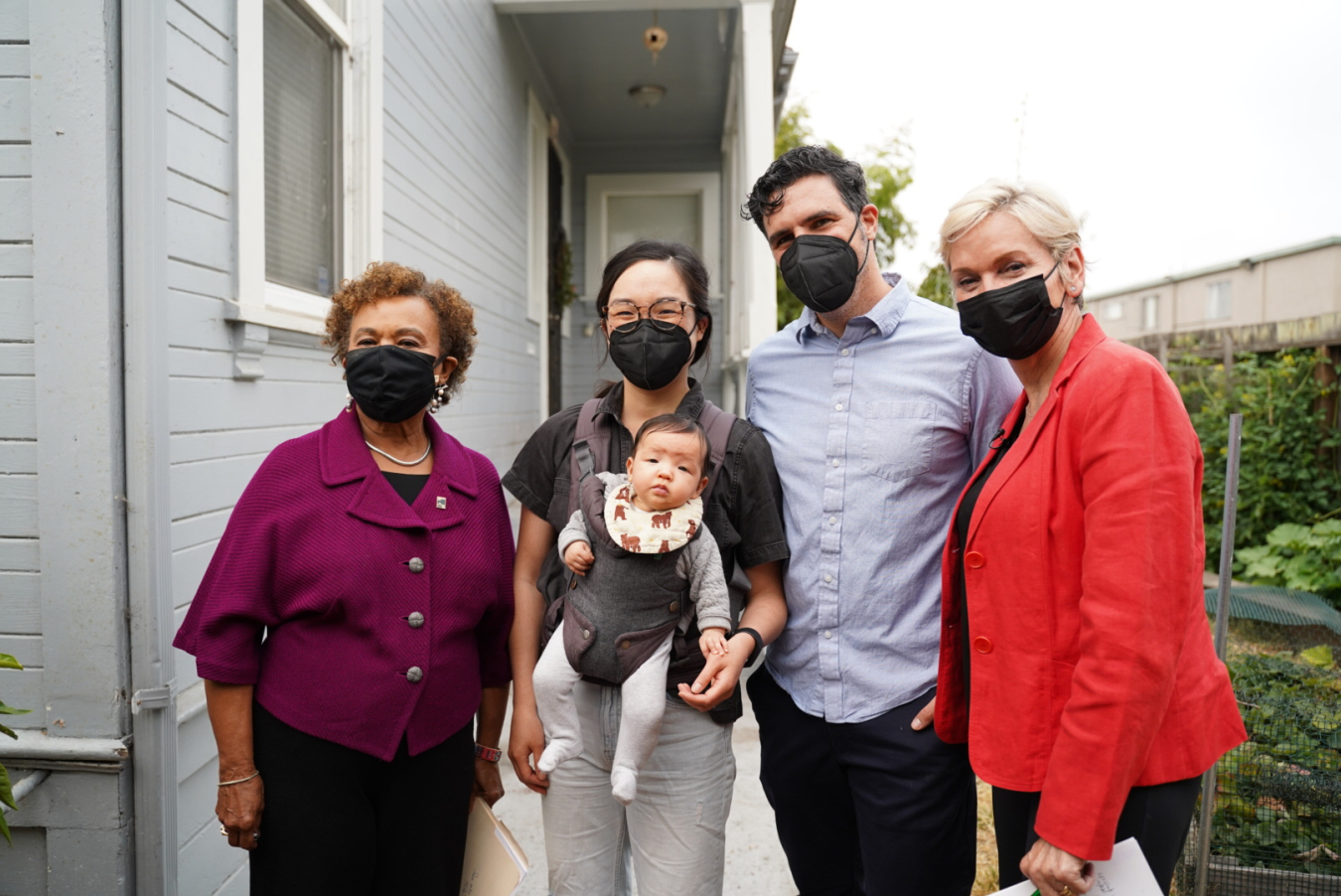Energy Secretary Jennifer Granholm celebrated the Summer of Solar with a visit to Pablo Diaz-Gutierrez’s home in Berkeley, California, to check out his solar panels. We asked Pablo what the installation process was like for him.
Solar Energy Technologies Office
August 20, 2021Energy Secretary Jennifer Granholm celebrated the Summer of Solar with a visit to Pablo Diaz-Gutierrez’s home in Berkeley, California, to check out his solar panels. We asked Pablo what the installation process was like for him. Here’s what he said.

What made you decide to “take the plunge” and go solar?
When we moved into our current home, about five years ago, we had a huge energy bill, especially compared to our previous place, a condo in San Francisco. We did some basic insulation work, and that cut our bill in half. Then we looked at the next step, and that was to install solar on a rooftop to essentially offset all of our electricity consumption. Since then, we have been extremely happy with the reduced bill, and I believe the system will pay for itself in three or four more years. Now we’re looking at phasing out our gas heating with a heat pump system—the next big milestone in our quest for efficient energy use.
What is the size of your system, when did you install it, and who is your solar installer?
The system was installed in early 2018 by Solar Technologies. We have a small setup—10 panels, with a potential power output of just over 3 kilowatts (kW).
Pablo’s 3.2 kW system produces 5,364 kilowatt-hours every year using SunPower modules.
Walk us through the process. What steps did you take to convert your home to solar power?
We heard from a friend about the Bay Area Sun Shares program, which offers bulk discounts to customers who are flexible on when their system can be installed. We signed up and got quotes from three providers. We liked Solar Technologies the best, and after a couple of visits to estimate the load required, setup constraints, and so on, they had a crew install the system in a couple of days. Then we had to wait for PG&E to connect the system—maybe a week or two—and we were on.
From start to finish, Pablo signed the contract with the installer in late September 2017. The installer submitted the application for the permit to install the system in December 2017. The permit was received in February 2018. The system was installed in early March 2018 and passed final inspection at the end of the month.
What challenges did you encounter along the way, and how were they handled?
Technically, the only challenge was that we had to reinforce our roof to account for the added weight. It was a quick job for our handyman to install a few support beams in our attic.
Logistically, we just had to choose between the various panel options without having domain knowledge. But Jason from Solar Technologies was very helpful in navigating us through the process. We considered other high-profile vendors, but they were way too expensive for us.
How did you finance your system—purchase, lease, PPA?
We purchased the system upfront and did the payback math counting on the federal tax rebate. The process of claiming that rebate was smooth, thanks in no small part to Jason from Solar Technologies, who helped us navigate the process. Overall, it was really interesting for us to see all the parts in motion, from the project management perspective, and we learned a lot in the process.
Since Pablo purchased his solar energy system in 2018, he was eligible to take advantage of the federal investment tax credit at 30%.
How has the solar system changed your energy costs?
It’s hard to completely decouple savings, because shortly before installing the system, we had added some basic insulation to reduce heating losses. My estimate is that combining insulation and solar, we’ve saved about two-thirds of our power bill.
What other benefits have you seen since installing solar?
Since we installed the panels, our house has been less hot on hot days, partly because a non-trivial part of the roof is now shielded from the sun. Before that, we had a few unbearably hot days at home. Shadows are great!
What advice would you give someone who is considering installing solar power but doesn’t quite know how to begin?
Just ask some neighbors for referrals and information on any local programs that assist with the process, financially and/or logistically. We were extremely happy with the Sun Shares program and wouldn’t have found out about it if we hadn’t asked. And talk to two or three installers before you make a choice. Use that process to learn what’s involved and what matters to you.
What do you wish had gone differently in the process of going solar?
I wish it was possible for rooftop solar panels owners to have their system disconnect from the grid in times of shutdown, so that we can power our house directly. I understand this is a safety measure, but it’s something I found disappointing.
This blog post is part of DOE’s Summer of Solar campaign, which lifts up stories of Americans who use solar energy and the communities that are making it easier to go solar.

